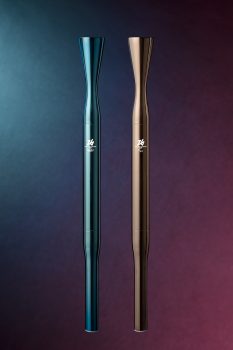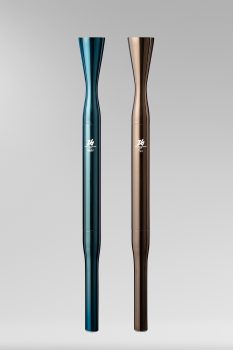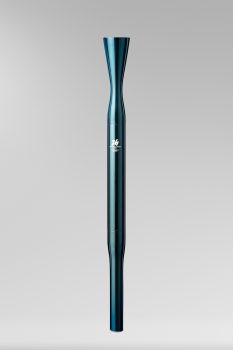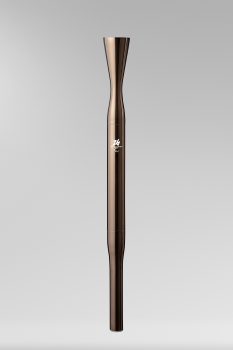At the Expo 2025 Osaka, Japan, the Milano Cortina 2026 Olympic and Paralympic Torches were unveiled on April 14—an event that marks a symbolic handover from one global celebration to the next. Commissioned by Eni, Premium Partner of the Games, and developed in collaboration with Versalis—Official Supporter and project leader—and Cavagna Group, the torches place the flame—its symbolism, visibility, and vitality—at the heart of the project. The Milano Cortina 2026 Olympic Winter Games will take place from February 6 to 22, 2026, and the Paralympic Winter Games from March 6 to 15, 2026.
“We wanted to strip away the superfluous,” said Carlo Ratti, Founding Partner of CRA-Carlo Ratti Associati, Director of MIT Senseable City Lab: “The brief was clear: the flame had to be the protagonist.” We started from a radical question: what if the torch almost disappeared? What if it stepped back, so the flame could genuinely emerge? That became the guiding principle. The torch is shaped around its core—a high-performance burner—keeping only what is strictly necessary to support it. Minimalism, here, is not an aesthetic; it’s a method and a statement against the superfluous, as the foundation of true sustainability.
The internal mechanism that ignites the flame is made visible for the first time in Olympic design. A vertical slit runs along the body of the torch, allowing viewers to observe the burner in action—where fire is quite literally born. This openness invites people to look through the object, not just at it. Developed with Cavagna Group, the burner is powered by bio-GPL produced from 100% renewable feedstocks—including used cooking oils and agro-industrial residues—at Eni’s Enilive biorefinery in Sicily. It creates a natural, warm yellow flame, unlike the colder blue tones often associated with fossil-based fuels. The result is a lively, natural fire, and mirrors the original fire in Olympia, Greece.
The torch uses advanced materials to support the flame without overshadowing it. The main body is finished with a PVD coating—a high-performance, heat-resistant, and sustainably applied film that allows the torch to shift appearance depending on its environment. It reflects snowy whites by day and deep blues at dusk—adapting to its surroundings as it travels across snowfields, cities, and hillsides, under the skies along the path of the Olympic and Paralympic torches: from Greece and England to Italy. The structure primarily comprises recycled aluminum and brass and weighs approximately 1,060 grams (excluding the canister). Each torch is designed for reuse: it can be refilled up to ten times, reducing the total number of units produced to only 1,500.
“The biggest challenge was designing not just an object, but a phenomenon,” added Ratti. “It is not about sculpting metal—it is about shaping fire, so to speak. Fire isn’t static. It changes with motion, wind, altitude, and temperature. We had to start from that instability and work backwards. That made it so compelling: designing from the inside out, around something alive and unpredictable—yet ensuring it performs flawlessly when the world is watching.”
Unveiled simultaneously at Expo 2025 Osaka and the Triennale in Milan, Italy, the torch naturally resonates with Italy and Japan’s design history. “It’s impossible to be here and not think of Sori Yanagi’s 1964 Tokyo torch or the one used in Sapporo in 1972—both masterpieces of clarity and restraint,” commented Ratti. “That same spirit guided our work: to subtract, simplify, and let the flame speak.”
With its unveiling, the Milano Cortina 2026 Olympic Torch begins its journey—a passage that will see it carried across many communities. But unlike many of its predecessors, this torch invites us to look through it, toward the flame, and everything it represents. “The most powerful symbols are strongest when they let something else shine,” concluded Ratti.








